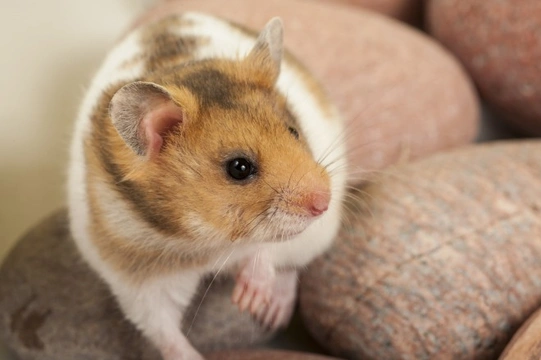
Some common hamster health problems
Despite being small and of course, rather delicate looking, hamsters are actually hardier than they look, and many hamsters will live to a relatively old age (in hamster terms) in good health, without ever suffering from any problems. However, hamsters can get sick and ill just like any other animal can, and all conscientious and responsible hamster owners should be able to recognise the basic signs of ill health in their pet, and be familiar with some of their most common health conditions.
In this article, we will take a brief look at some of the most common health problems that can affect hamsters.
Respiratory problems
Hamsters can and sometimes do suffer from infections of the upper respiratory tract, such as coughs, colds and sniffles, just like all other mammals. However, more serious conditions can lead to pneumonia, which is often fatal.
Symptoms of upper respiratory tract problems can include sneezing, wheezing and laboured breathing, and potentially, a discharge from the nose and possibly eyes. If your hamster just seems to have a case of the minor sniffles but is otherwise active and well, and is eating and drinking normally, this is likely a minor infection that will clear up on its own. However, for more serious problems, veterinary attention should be sought.
Wet tail
Wet tail is the colloquial term given to a condition called proliferative ileitis and regional enteritis. The name “wet tail” is descriptive of the diarrhoea that accompanies the condition, although diarrhoea on its own does not necessary mean that your hamster has this condition.
Wet tail is very contagious between hamsters kept in close quarters, and occurs most commonly in hamsters that have not long been weaned. The condition is thought to be caused by a bacterial infection, and is more likely to present in hamster colonies that are overcrowded or stressed than those that are happy.
Symptoms of the condition can include diarrhoea, loss of appetite and a “staring” coat, which means that the coat appears ruffled and not smooth and straight as it normally is. Prompt veterinary attention is required in order to give your hamster the best chance of survival.
Abscesses
Abscesses are pus-filled lumps under the skin, which may develop where a cut, scratch or graze has occurred and given an infection the chance to set in. While they generally form on the body, hamsters can also develop abscesses in the pouches of their cheeks, if they eat hard or rough food.
Cheek pouch abscesses make the hamster look as if they are holding food even when their mouth is empty, and an abscess on any part of the body will require veterinary treatment with antibiotics, and possibly, the manual draining of the abscess itself.
Diarrhoea
As mentioned above, diarrhoea is one of the main symptoms of wet tail, but diarrhoea can be caused in the hamster for many other reasons too. Feeding too many vegetables or too much fruit can lead to loose stools, but this will not usually be accompanied by lethargy or a loss of appetite. Because they are very small, hamsters with diarrhoea are at real risk of dehydration, so it is important to monitor your hamster to ensure that they are drinking enough water.
Withholding fruit and veg and just feeding hamster mix for a few days will usually resolve minor bouts of diarrhoea, and once the problem is resolved, you can reintroduce fruit and veg into the diet slowly, taking care to monitor for further incidences of diarrhoea.
Skin problems
A relatively broad spectrum of different types of skin problems can affect hamsters, including fungal infections such as ringworm, and infestation with mites. Some hamsters are also prone to allergies and infections of the skin, all of which will likely require treatment by your vet.
Some hamsters, particularly in old age, may lose their hair seasonally over parts of the body, and assuming that this is not accompanied by redness of the skin or dry, flaking skin, is not always cause for concern. However, if the skin also appears to be affected, or your hamster seems to be irritated and itchy, again, you should contact your vet.
It is also important to note that choosing the bedding for your hamster should be done carefully, as some bedding products can lead to skin and respiratory allergies, and affect your hamster’s health. Cedar wood shavings and wood chips are one of these, and you should not use any oily or fragrant wood shavings in your hamster’s enclosure.
Pine shavings are one of the most commonly offered bedding products for small rodents, but again, pine shavings can release volatile compounds that can affect your hamster’s skin and lungs. If you are unsure, stick to paper bedding or shavings that are labelled as being safe for hamsters.



